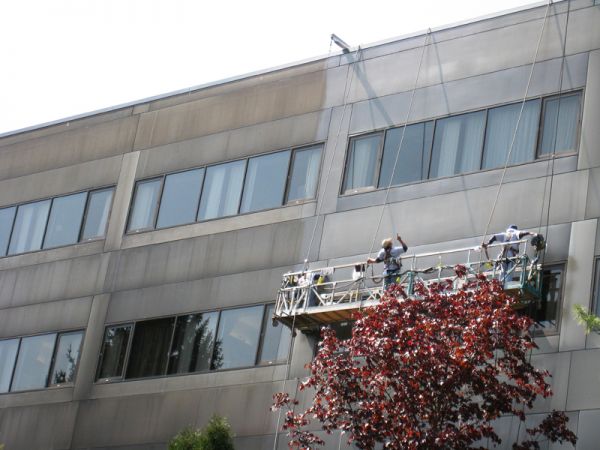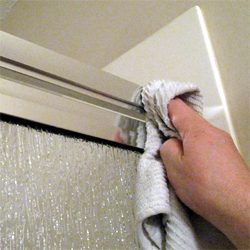Anodising Care and Maintenance
52 Years of Aluminium Excellence
Care and Maintenance
The life of an anodised finish can be greatly enhanced by the adoption of a regular documented maintenance programme. Any chemical attack on decorative surfaces which is not regularly cleaned becomes increasingly severe and after several years, may be impossible to restore.
A regular cleaning and maintenance regime is essential for two very good reasons:
To maintain a decorative appearance and to reduce any chemical attack, if applicable
Anodised surfaces are cleaned to remove dirt, grime, grit, atmospheric pollutants and iridescence.
The cleaning procedures may be broken down into three distinct categories, namely:

Primary Cleaning
Is the initial cleaning that should occur after completion, to remove atmospheric dust, smut, deposits of dirt, possible cement deposits, glues, etc. from the anodised surface
Secondary Cleaning
This is normally a heavy duty clean that is carried out on a anodised surface that has been neglected for some time. This should be carried out by companies that specialise in the cleaning of facades, windows, doors, curtain walling etc. The most important criteria of an aluminium cleaning agent Is that it should not be toxic, have a pH within 5 – 8 and be free of fluorides, chlorides, or sulphates.
Periodic Cleaning
This is the cleaning cycle that should be done on a regular basis AFTER the primary and secondary phase. (In the case of a new installation etc. it follows after the Primary). The intervals of each cleaning cycle are dependent on the atmospheric pollutants, area, region, corrosive level, etc. for a particular region. (Refer to Guide to selection of anodic coating thickness)

What You Should Do
- Protect exposed Aluminium surfaces until all wet trades etc. have been completed.
- Any cement or acid should be removed as soon as practical. This will prevent any chemical attack.
- When cleaning, wash down all surfaces with a neutral detergent and rinse thoroughly.
- Remove awkward deposits on ANODISED aluminium, with a suitable nylon abrasive cleaning pad or brush, plus neutral detergent, and then rinse.
To clean long neglected areas it is advisable to use proprietary cleaners specifically formulated for aluminium surfaces. These products contain residual waxes etc. and can substantially improve the appearance of worn or weathered surfaces.
What you should NEVER DO
- Use of wire brushes, steel wool, and emery paper are NOT recommended under any circumstances.
- Avoid mechanical damage from scaffolding, site handling, mechanical impact etc.
- Do NOT allow strong acids such as Hydrochloric, Acetic etc. to come into contact with anodised aluminium.
- Do NOT allow mortar or mortar cleaning chemicals to come into contact with anodised surfaces.
- Do NOT allow strong alkalis such as caustic soda, lime etc. to come into contact with anodised aluminium
- Do NOT allow Brass or Copper to come into direct contact or close proximity to Anodised Aluminium
Onsite Handling
Ensure that the aluminium is properly protected with interleaved wrapping in paper or plastic and ensure that the wrapping does not get damp during storage. To ensure that the anodised coating is not attacked by corrosive chemicals, a temporary protective coating can be applied in the form of a suitable non-yellowing lacquer, e.g. methyl methacrylate or cellulose acetate butyrate, or a strippable coating or tape (polyethylene) is recommended. Tape and strippable coatings should be easily removable.